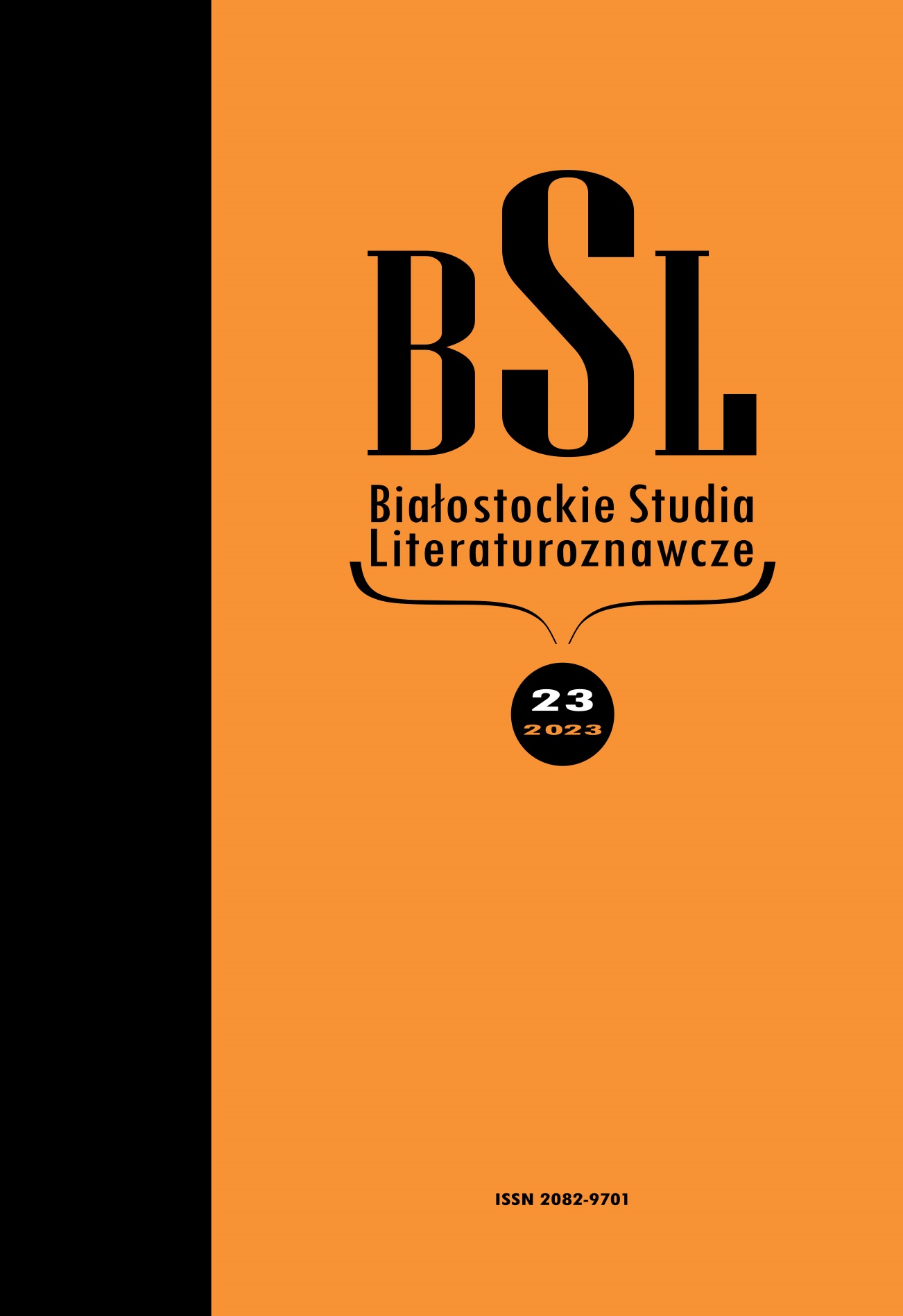“Taming” and “Unfamiliarity”: a Landscape To Be Told
Małgorzata Mikołajczak
Faculty of Humanities. Uniwersity of Zielona Górahttps://orcid.org/0000-0002-7570-581X
Abstract
The article concerns the way in which the cultural landscape of the so-called Recovered Territories was “tamed” after 1945 and today. The author juxtaposes the diagnosis of Jacek Kolbuszewski with Olga Tokarczuk’s contradictory opinion. In his article "Oswajanie krajobrazu kulturowego. Z problematyki integracji kulturowej na Ziemiach Odzyskanych" [Taming cultural landscape. On the problem of cultural integration on the Recovered Territores] (1988), Kolbuszewski states that the process of integration was successfully completed in the second half of the 1950s. Tokarczuk’s essay "Bezimienny krajobraz" [Nameless landscape] (included in the book Nieswojość [strangeness], 2019) contradicts the thesis of successful adaptation in the ‘post-German’ territories. According to Tokarczuk, the prerequisite for such adaptation is the recognition of the inhabited space as one's own, which is achieved through the naming of the ‘nameless landscape’ and the stories about the place. Christopher Tilley's concept of cultural landscape, which emphasises the relationship between narratives and space, resonates with this position. In reference to this concept and using the illustation of Filip Springer's reportage as well as Krzysztof Fedorowicz's novel, the author of the article demonstrates how contemporary literature concerning the Lower Silesia develops a bond with the place and tames the ‘post-German’ landscape on new terms.
Keywords:
landscape, taming, un-familiarity, Regained Lands, contemporary literatureReferences
Fedorowicz Krzysztof (2020), Zaświaty. Opowieści o nieprzemijaniu, Kraków: Wysoki Zamek.
Heidegger Martin (1974), Budować, mieszkać, myśleć, przeł. K. Michalski, „Teksty: Teoria Literatury, Krytyka, Interpretacja”, nr 6, s. 137–152.
Kolbuszewski Jacek (1988), Oswajanie krajobrazu. Z problematyki integracji kulturowej na Ziemiach Odzyskanych, w: Symbolika regionów. Studia etnologiczno-folklorystyczne, red. D. Simonides, Opole: Instytut Śląski w Opolu, s. 67–82.
Leśniakowska Marta (2019), Taki pejzaż. Fenomenologia fotograficznej weduty, w: Nieswojość, red. A. Pankiewicz, M. Przybyłko, Wrocław: Wrocławskie Wydawnictwo Warstwy, s. 139–149.
Sakson Andrzej (2020), Specyfika przemian społecznych na Ziemiach Nowych, w: A. Sakson, Nowe społeczeństwo Ziem Zachodnich i Północnych (1945–2020), Poznań: Wydawnictwo Naukowe Wydziału Nauk Politycznych i Dziennikarstwa.
Sendyka Roma (2015), Krajobrazy (nie)pamięci: dekonstrukcja krajobrazu kulturowego, w: Więcej niż obraz, red. E. Wilk, A. Nacher, M. Zdrodowska, E. Twardoch i M. Gulik, Gdańsk: WN Katedra.
Springer Filip (2014), Mein Gott, jak pięknie, Kraków: Karakter.
Sztyber Radosław (2022), „Tu, czyli tam”. O czasie i szacunku (wybrane aspekty prozy Krzysztofa Fedorowicza), w: Prace aksjologiczne. Język – literatura – kultura, t. 3, red. M. Kaczor, P. Kładoczny, Zielona Góra: Oficyna Wydawnicza Uniwersytetu Zielonogórskiego, s. 377–399.
Tilley Christopher (2014), Praktykowanie krajobrazu (fragment z Fenomenologii krajobrazu), tłum. D. Stadnik, w: Krajobrazy. Antologia tekstów, teksty zebrały, opracowały i komentarzem opatrzyły B. Frydryczak i D. Angutek, Poznań: Wydawnictwo Poznańskiego Towarzystwa Przyjaciół Nauk, s. 411–422.
Tokarczuk Olga (2019), Bezimienny krajobraz, w: Nieswojość, red. A. Pankiewicz, M. Przybyłko, Wrocław: Wrocławskie Wydawnictwo Warstwy, s. 173–180.
Faculty of Humanities. Uniwersity of Zielona Góra https://orcid.org/0000-0002-7570-581X
License

This work is licensed under a Creative Commons Attribution-ShareAlike 4.0 International License.
Articles published on the platform of Białostockie Studia Literaturoznawcze are available under the license CC-BY-SA 4.0 (CC Attribution-ShareAlike 4.0).
All interested parties have access to the published articles under the following conditions:
1.They must acknowledge authorship, which means crediting the author, title, source, together with the disseminated work (including the hyperlinks to the original work and doi) as well as the same license under the same conditions.
2. Derivative works can be distributed only under the same license as the original work.
The University of Białystok retains the right to the entire journal (layout, graphic design, title, cover design, logo, etc.).
The author retains the property right but confers on the University of Białystok the right to use the work.



